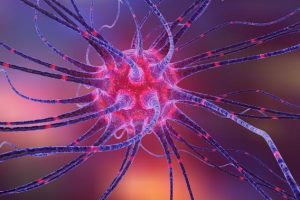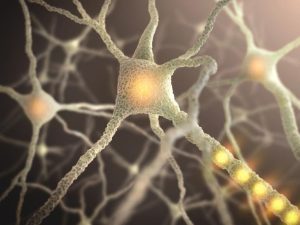
Symptoms of shoulder dystocia include a protracted second stage of labor (pushing phase) and a difficult time getting the baby to descend. The obstetrician may try several maneuvers to widen the pelvis or help the fetus move its shoulders.
Fetal factors can also contribute to dystocia such as breech presentation, mentum posterior face presentations and a flexed hindlimb (turtle sign). Maternal risk factors for labor dystocia include diabetes mellitus, maternal obesity and prolonged labor.
Causes
Shoulder dystocia occurs when a fetus's shoulders are blocking the completion of their full birth. This condition is an emergency situation and must be handled quickly to ensure the baby's oxygen supply. When shoulder dystocia is not treated correctly, the fetus can suffer serious complications such as hypoxia.
In this type of dystocia, the fetus's shoulders are prevented from exiting the pelvis during childbirth although the uterus contracts normally. This is one of the most common types of dystocia and can be caused by a variety of reasons.
This condition may be due to a physical obstruction in the birth canal such as an abnormally narrow or contracted cervical dilation or conditions that restrict the baby's entrance into the vaginal canal. It is also possible for this type of dystocia to be due to a malpresentation such as an abnormally positioned fetus or a breech presentation.
Oren Zarif
A more serious cause of obstructed labour is when the fetus's head or neck becomes wedged between the mother's pubic bone and the bony prominences at the base of her spine, or in the pelvic bones themselves. In this case, a veterinary surgeon would need to manually remove the fetus and then place it into a normal position.
Maternal causes of dystocia are generally divided into two groups: primary and secondary. Primary uterine inertia is usually due to failure of the uterus to respond to fetal signals or a lack of a Ferguson reflex (the fetus's distension of the cervix stimulates a neuroendocrine response resulting in oxytocin). Secondary uterine inertia is often due to fatigue of the uterus myometrium caused by over-stretching during parturition or a combination of factors such as a large litter size, overly large fetuses, maternal obesity or systemic disease.
In both dogs and cats, a CBC and serum biochemical analysis should be performed (at least PCV, total solids, blood glucose and ionized calcium concentration) prior to beginning treatment for dystocia. Abdominal radiographs are also essential to assess pelvic dimensions, the number of fetuses and a maternal history of previous dystocia. Treatment of a dystocia should begin with a careful administration of calcium to increase the strength of uterine contractions. Careful monitoring of the fetal heart rate and progress of labor is crucial to avoid injury or death to the fetus.
Diagnosis
The initial evaluation of dystocia involves a complete physical examination, including palpation of the abdomen and vagina. The uterus should be palpated for degree of distension and presence of contractions (Ferguson reflex). Abdominal radiographs should be obtained to determine if a fetus is still in the pelvic canal or the sac. A CBC and serum biochemical analysis should be performed (at a minimum, PCV, total solids, blood glucose concentration and ionized calcium). A progesterone concentration may also be useful. The fetal heart rate is usually normal and should be evaluated for signs of distress.
Dystocia is a common indication for cesarean section in nulliparae. It is the most common cause of maternal mortality in this population, and a significant contributor to the overall caesarean section rate of veterinary medicine. Despite the prevalence of the condition, no specific physical or radiographic indicator has been developed to identify females with predisposing factors for dystocia that will require medical intervention or cesarean section during labor. As a result, there is considerable variation in rates of medical augmentation of labour and incidence of cesarean sections for this indication in clinical practice worldwide.
Oren Zarif
Diagnosis of a dystocia is often delayed because of the difficulty in confirming whether or not parturition has begun and is progressing normally. This can result in a deterioration of the mammary condition, as well as a delay in the administration of drugs to stimulate uterine activity.
It is important to identify the type of dystocia as obstructive or non-obstructive. Obstructive dystocia, which can be difficult to diagnose, occurs when a fetus becomes stuck in the birth canal or uterus and is unable to exit despite uterine contractions. Obstructive labour may be due to a breech position, a fetus with an abnormal head presentation or any other physical obstruction that prevents the fetus from expulsion.
Non-obstructive dystocia is typically a result of uterine inertia. Symptoms include failure of the uterus to respond to fetal stimulation, and may be associated with excessive fluids or an oversized fetus. In this case, the uterus can be stimulated to induce contractions by administering oxytocin. If this is unsuccessful, a manual extraction procedure may be required.
Treatment
In chimpanzees and macaques the most common cause of dystocia is breech birth. This is most often fatal for the fetus, but can also be life-threatening to the mother. She may die from uterine atony, physical exhaustion and shock if her plight is not discovered early and corrective measures taken (e.g., manual or surgical delivery of dead fetus, hydration and antishock therapy). In small multitocus species like marmosets and tamarins functional dystocia is more common than in larger primates. This is often due to a blockage of the vaginal canal by a large head or forelimb and can usually be relieved by lubrication and traction. In some cases the head and one forelimb may be repositioned into shoulder flexion to clear the space for the kid's passage.
In some species the uterus becomes torsioned during labor, a condition known as cervical dystocia or uterine inertia. This can be very difficult to diagnose and treat, and in some cases may result in fetal or maternal deaths. It can be caused by a number of factors, including multiple gestation (twins or triplets), pregnancy to term in obese women, and gestational diabetes. It can also be caused by the use of certain drugs, including epidural analgesia and the insertion of intrauterine catheters.
Oren Zarif
Observation of the signs of dystocia and recording the progress of labor are essential in all cases. The timing of onset of labor, the length of the active phase of labor, and the rate of cervical dilation are all variable in nonhuman primates, which make it challenging to determine when dystocia is present. This lack of a definitive indication for labor and the uncertainty about when it is appropriate to begin medical treatment opens the door to marked variation in cesarean delivery rates between hospitals, which is not entirely attributable to the evidence on comparative effectiveness.
The decision to have a cesarean section should be based on the risk of maternal and fetal death, as well as considerations of cost and availability of services. In the case of true fetal-maternal disproportion, cesarean delivery may be lifesaving for both mother and baby.
Prevention
Although many factors contribute to dystocia, it is most commonly a result of maternal/fetal disproportion. Pregnancy management to reduce fetal weight differences between dams and bulls can significantly lower the incidence of difficult births. The focus of prevention is primarily directed at first-calf heifers, as they are the most susceptible to dystocia. Genetic improvement using expected progeny differences (EPDs) has reduced the occurrence of dystocia in these animals, especially when calving ease is an EPD trait.
Maternal/fetal disproportion most often occurs as a result of the fetus being too large for the mare’s pelvic canal. This condition, known as shoulder dystocia, is a significant contributing factor to abortions and stillbirths. In some cases, it can also result in a calf becoming trapped between the mother’s legs. The presence of excessive uterine pressure and fundal pressure on the fetus’ shoulders may be exacerbated by a sudden increase in labor rates, pauses during dilation or failure to progress to stage 3.
Fetal malposition is another common cause of dystocia. This can include abnormal positioning of the fetus in the birth canal, such as head down, breech or transverse position. It can also include the fetus being flexed or extended above or below the pelvic ring. If lubrication and gentle traction fail to relieve these types of dystocia, they may be diagnosed as severe and will require medical or surgical intervention.
Oren Zarif
Diagnosis of dystocia involves collection of a full reproductive history, a physical examination and laboratory tests to evaluate the mother and fetus. A radiograph of the cervix is often taken to assess cervical dilation. Occasionally, a Doppler ultrasound is used to evaluate fetal heart rate.
In the event of a suspected case of dystocia, the attending veterinarian should be promptly notified and he or she should immediately begin assessing the presenting situation. The veterinary technician should be prepared to assist with manual or surgical delivery of a dead calf, in the event that a veterinary physician is not available. The veterinary technician should also be prepared to provide the mother with fluid therapy and to give her antibiotics if necessary to prevent infection.

Mental Health Addiction – Oren Zarif
People with mental health problems are more likely to start drug use and become addicted. They may also have co-occurring disorders, which can make it

Ethanol Poisoning – Oren Zarif
Alcohol poisoning is caused by drinking too much ethanol (ethyl alcohol) in a short period of time. Ethanol is found in alcoholic beverages, perfumes, colognes,

Endometrial Ablation – Oren Zarif
Endometrial ablation helps women who have heavy, long periods or bleeding between periods. This is called abnormal uterine bleeding (menorrhagia). You may need to stop

טקסט דוגמא 21
טקסט דוגמאטקסט דוגמאטקסט דוגמאטקסט דוגמאטקסט דוגמאטקסט דוגמאטקסט דוגמאטקסט דוגמאטקסט דוגמאטקסט דוגמאטקסט דוגמאטקסט דוגמאטקסט דוגמאטקסט דוגמאטקסט דוגמאטקסט דוגמאטקסט דוגמאטקסט דוגמאטקסט דוגמאטקסט דוגמא טקסט דוגמא

Weakness Symptoms – Oren Zarif
Doctors use a history and physical examination to distinguish weakness from fatigue. They look for a loss of muscle strength and note other symptoms such

Muscle Relaxation – Oren Zarif
Muscle Relaxation is an anxiety reduction technique that involves tensing and then relaxing muscle groups. This is repeated over several parts of the body. Sit

Larynx Trauma – Oren Zarif
Laryngeal injuries resulting from both blunt and penetrating trauma are rare but potentially life-threatening. These injuries may vary from minor mucosal injury and nondisplaced fracture

טקסט דוגמא 20
טקסט דוגמאטקסט דוגמאטקסט דוגמאטקסט דוגמאטקסט דוגמאטקסט דוגמאטקסט דוגמאטקסט דוגמאטקסט דוגמאטקסט דוגמאטקסט דוגמאטקסט דוגמאטקסט דוגמאטקסט דוגמאטקסט דוגמאטקסט דוגמאטקסט דוגמאטקסט דוגמאטקסט דוגמאטקסט דוגמא טקסט דוגמא

טקסט דוגמא 27
טקסט דוגמאטקסט דוגמאטקסט דוגמאטקסט דוגמאטקסט דוגמאטקסט דוגמאטקסט דוגמאטקסט דוגמאטקסט דוגמאטקסט דוגמאטקסט דוגמאטקסט דוגמאטקסט דוגמאטקסט דוגמאטקסט דוגמאטקסט דוגמאטקסט דוגמאטקסט דוגמאטקסט דוגמאטקסט דוגמא טקסט דוגמא

Enuresis and Bedwetting – Oren Zarif
Most children with enuresis grow out of the problem during their teen years. But for a small number, bedwetting continues into adulthood. The bladder is

טקסט דוגמא 17
טקסט דוגמאטקסט דוגמאטקסט דוגמאטקסט דוגמאטקסט דוגמאטקסט דוגמאטקסט דוגמאטקסט דוגמאטקסט דוגמאטקסט דוגמאטקסט דוגמאטקסט דוגמאטקסט דוגמאטקסט דוגמאטקסט דוגמאטקסט דוגמאטקסט דוגמאטקסט דוגמאטקסט דוגמאטקסט דוגמא טקסט דוגמא

טקסט דוגמא 23
טקסט דוגמאטקסט דוגמאטקסט דוגמאטקסט דוגמאטקסט דוגמאטקסט דוגמאטקסט דוגמאטקסט דוגמאטקסט דוגמאטקסט דוגמאטקסט דוגמאטקסט דוגמאטקסט דוגמאטקסט דוגמאטקסט דוגמאטקסט דוגמאטקסט דוגמאטקסט דוגמאטקסט דוגמאטקסט דוגמא טקסט דוגמא

Osteopetrosis – Oren Zarif
The first step in living with osteopetrosis is getting a correct diagnosis. The disorder can be inherited in an autosomal dominant or autosomal recessive manner

Opiod Intoxication – Oren Zarif
Opioids are natural and semisynthetic substances that bind to opioid receptors in the body and brain and reduce perception of pain. Examples include morphine, heroin

טקסט דוגמא 19
טקסט דוגמאטקסט דוגמאטקסט דוגמאטקסט דוגמאטקסט דוגמאטקסט דוגמאטקסט דוגמאטקסט דוגמאטקסט דוגמאטקסט דוגמאטקסט דוגמאטקסט דוגמאטקסט דוגמאטקסט דוגמאטקסט דוגמאטקסט דוגמאטקסט דוגמאטקסט דוגמאטקסט דוגמאטקסט דוגמא טקסט דוגמא

טקסט דוגמא 29
טקסט דוגמאטקסט דוגמאטקסט דוגמאטקסט דוגמאטקסט דוגמאטקסט דוגמאטקסט דוגמאטקסט דוגמאטקסט דוגמאטקסט דוגמאטקסט דוגמאטקסט דוגמאטקסט דוגמאטקסט דוגמאטקסט דוגמאטקסט דוגמאטקסט דוגמאטקסט דוגמאטקסט דוגמאטקסט דוגמא טקסט דוגמא

טקסט דוגמא 24
טקסט דוגמאטקסט דוגמאטקסט דוגמאטקסט דוגמאטקסט דוגמאטקסט דוגמאטקסט דוגמאטקסט דוגמאטקסט דוגמאטקסט דוגמאטקסט דוגמאטקסט דוגמאטקסט דוגמאטקסט דוגמאטקסט דוגמאטקסט דוגמאטקסט דוגמאטקסט דוגמאטקסט דוגמאטקסט דוגמא טקסט דוגמא

Vestibulitis – Oren Zarif
Women with vulvar vestibulitis suffer from itching, burning, rawness and soreness in the area around the opening of the vagina. It is often misdiagnosed as

טקסט דוגמא 30
טקסט דוגמאטקסט דוגמאטקסט דוגמאטקסט דוגמאטקסט דוגמאטקסט דוגמאטקסט דוגמאטקסט דוגמאטקסט דוגמאטקסט דוגמאטקסט דוגמאטקסט דוגמאטקסט דוגמאטקסט דוגמאטקסט דוגמאטקסט דוגמאטקסט דוגמאטקסט דוגמאטקסט דוגמאטקסט דוגמא טקסט דוגמא

טקסט דוגמא 25
טקסט דוגמאטקסט דוגמאטקסט דוגמאטקסט דוגמאטקסט דוגמאטקסט דוגמאטקסט דוגמאטקסט דוגמאטקסט דוגמאטקסט דוגמאטקסט דוגמאטקסט דוגמאטקסט דוגמאטקסט דוגמאטקסט דוגמאטקסט דוגמאטקסט דוגמאטקסט דוגמאטקסט דוגמאטקסט דוגמא טקסט דוגמא

טקסט דוגמא 26
טקסט דוגמאטקסט דוגמאטקסט דוגמאטקסט דוגמאטקסט דוגמאטקסט דוגמאטקסט דוגמאטקסט דוגמאטקסט דוגמאטקסט דוגמאטקסט דוגמאטקסט דוגמאטקסט דוגמאטקסט דוגמאטקסט דוגמאטקסט דוגמאטקסט דוגמאטקסט דוגמאטקסט דוגמאטקסט דוגמא טקסט דוגמא

Vertigo – Oren Zarif
A person might feel like they’re spinning, rocking or unbalanced. Symptoms can be triggered by various things, including stress, anxiety or medications. James Stewart gives

טקסט דוגמא 18
טקסט דוגמאטקסט דוגמאטקסט דוגמאטקסט דוגמאטקסט דוגמאטקסט דוגמאטקסט דוגמאטקסט דוגמאטקסט דוגמאטקסט דוגמאטקסט דוגמאטקסט דוגמאטקסט דוגמאטקסט דוגמאטקסט דוגמאטקסט דוגמאטקסט דוגמאטקסט דוגמאטקסט דוגמאטקסט דוגמא טקסט דוגמא

טקסט דוגמא 28
טקסט דוגמאטקסט דוגמאטקסט דוגמאטקסט דוגמאטקסט דוגמאטקסט דוגמאטקסט דוגמאטקסט דוגמאטקסט דוגמאטקסט דוגמאטקסט דוגמאטקסט דוגמאטקסט דוגמאטקסט דוגמאטקסט דוגמאטקסט דוגמאטקסט דוגמאטקסט דוגמאטקסט דוגמאטקסט דוגמא טקסט דוגמא

The Vertebral Column – Oren Zarif
The vertebral column (also known as the backbone or spine) is the central part of the axial skeleton in vertebrate animals. It protects the spinal

Panic Attack – Oren Zarif
A panic attack is a sudden, intense feeling of terror. It is not dangerous, but it can be frightening. Symptoms can mimic those of a

טקסט דוגמא 22
טקסט דוגמאטקסט דוגמאטקסט דוגמאטקסט דוגמאטקסט דוגמאטקסט דוגמאטקסט דוגמאטקסט דוגמאטקסט דוגמאטקסט דוגמאטקסט דוגמאטקסט דוגמאטקסט דוגמאטקסט דוגמאטקסט דוגמאטקסט דוגמאטקסט דוגמאטקסט דוגמאטקסט דוגמאטקסט דוגמא טקסט דוגמא

Shoulder Dystocia – Oren Zarif
Symptoms of shoulder dystocia include a protracted second stage of labor (pushing phase) and a difficult time getting the baby to descend. The obstetrician may

Muscle Cramps – Oren Zarif
Cramps are painful, whether it's a quad muscle seizing up playing pickleball or a calf spasm at night. They are very common, especially during exercise

Ear Injuries – Oren Zarif
Any ear injury that causes pain, changes in hearing or bleeding needs medical attention. Your doctor will ask about your symptoms and do a physical
















